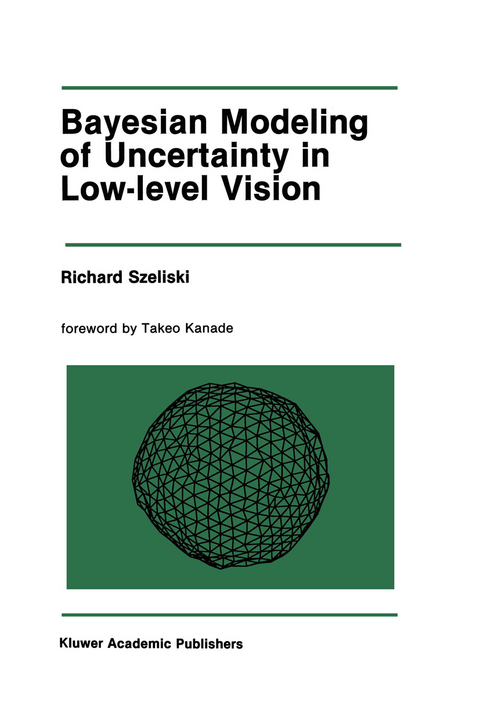
Bayesian Modeling of Uncertainty in Low-Level Vision
Springer-Verlag New York Inc.
978-1-4612-8904-3 (ISBN)
1 Introduction.- 1.1 Modeling uncertainty in low-level vision.- 1.2 Previous work.- 1.3 Overview of results.- 1.4 Organization.- 2 Representations for low-level vision.- 2.1 Visible surface representations.- 2.2 Visible surface algorithms.- 2.3 Multiresolution representations.- 2.4 Discontinuities.- 2.5 Alternative representations.- 3 Bayesian models and Markov Random Fields.- 3.1 Bayesian models.- 3.2 Markov Random Fields.- 3.3 Using probabilistic models.- 4 Prior models.- 4.1 Regularization and fractal priors.- 4.2 Generating constrained fractals.- 4.3 Relative depth representations (reprise).- 4.4 Mechanical vs. probabilistic models.- 5 Sensor models.- 5.1 Sparse data: spring models.- 5.2 Sparse data: force field models.- 5.3 Dense data: optical flow.- 5.4 Dense data: image intensities.- 6 Posterior estimates.- 6.1 MAP estimation.- 6.2 Uncertainty estimation.- 6.3 Regularization parameter estimation.- 6.4 Motion estimation without correspondence.- 7 Incremental algorithms for depth-from-motion.- 7.1 Kaiman filtering.- 7.2 Incremental iconic depth-from-motion.- 7.3 Joint modeling of depth and intensity.- 8 Conclusions.- 8.1 Summary.- 8.2 Future research.- A Finite element implementation.- B Fourier analysis.- B.1 Filtering behavior of regularization.- B.2 Fourier analysis of the posterior distribution.- B.3 Analysis of gradient descent.- B.4 Finite element solution.- B.5 Fourier analysis of multigrid relaxation.- C Analysis of optical flow computation.- D Analysis of parameter estimation.- D.1 Computing marginal distributions.- D.2 Bayesian estimation equations.- D.3 Likelihood of observations.- Table of symbols.
| Reihe/Serie | The Springer International Series in Engineering and Computer Science ; 79 |
|---|---|
| Zusatzinfo | XX, 198 p. |
| Verlagsort | New York, NY |
| Sprache | englisch |
| Maße | 155 x 235 mm |
| Themenwelt | Informatik ► Grafik / Design ► Digitale Bildverarbeitung |
| Informatik ► Theorie / Studium ► Künstliche Intelligenz / Robotik | |
| Technik ► Elektrotechnik / Energietechnik | |
| ISBN-10 | 1-4612-8904-1 / 1461289041 |
| ISBN-13 | 978-1-4612-8904-3 / 9781461289043 |
| Zustand | Neuware |
| Haben Sie eine Frage zum Produkt? |
aus dem Bereich


